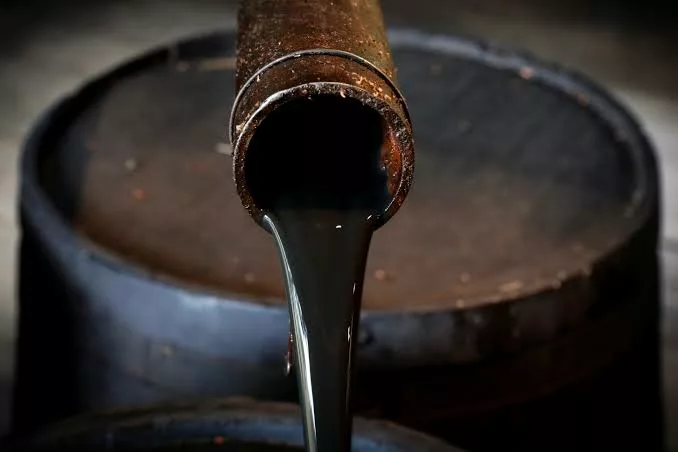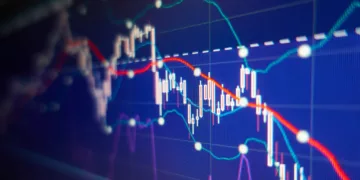The growing global oil glut poses new fiscal and policy challenges for Africa’s biggest crude producer, Nigeria, as international prices fall to around $60 per barrel amid an oversupplied market.
Bloomberg reported yesterday that more than one billion barrels of crude are stored or in transit globally — the most significant volume since 2020 — leading to weakened demand for shipments from major producers. According to the report, the International Energy Agency (IEA), a Paris-based forecaster, projects that global inventories could swell by as much as four million barrels per day in 2026, a development threatening to squeeze the revenue base of oil-dependent economies like Nigeria.
Analysts believe that for Nigeria, the oil surplus comes at a delicate time when the country is struggling to stabilise its foreign exchange market, manage rising debt, and implement economic reforms under the subsidy-free fuel regime, as crude accounts for about 80 per cent of export earnings and over half of government revenue. According to analysts, the global price slide could undermine the 2025 budget projections anchored on higher oil benchmarks. They also warned that if prices remain low, the federal government may face fresh fiscal pressures, including funding shortfalls for capital projects and potential cuts to subnational allocations from the Federation Account.
Energy experts said the situation also tests Nigeria’s energy policy direction, particularly as the government pushes for increased production under the new Petroleum Industry Act (PIA) while courting foreign investors.
Industry experts also said the global glut could dampen investment appetite in the short term, especially as traders predict oil could slip into the $50 range next year.
However, some optimists believe Nigeria could mitigate the risks by ramping up domestic refining capacity, boosting gas exports, and accelerating the diversification of its economy to reduce exposure to external oil shocks.
According to Bloomberg, the phenomenon gives tangible support to long-held predictions that surging production will push the market into surplus. While China has kept the excess hidden for months by scooping up cheap barrels for its strategic reserves, the market finally seems to have reached a tipping point as crude cargoes from the Middle East are starting to go unsold, and key price gauges signal that supply scarcity is ending.
International oil futures have sunk to a five-month low near $60 a barrel, and top traders are braced for a further slide. “For the last 12 months, we’ve all known that there’s this surplus that’s coming,” Ben Luckock, global head of oil at Trafigura Group, said at the Energy Intelligence Forum in London this week. “I think it really is just about here now.”
The report revealed that the transition to oil supply abundance should offer relief to consumers after years of price inflation and fulfil President Donald Trump’s unceasing desire for cheaper gasoline; however, it poses a threat to U.S. shale drillers, who are already fretting over the industry’s future, and to the Kingdom of Saudi Arabia, which is grappling with a soaring budget deficit.
The International Energy Agency has been predicting a flood of supplies for over a year. Additional barrels from the U.S., Brazil, Canada, and Guyana were observed, with an overwhelming growth in demand that has been slowing as China adopts electric vehicles. The scale of the projected oversupply began to swell in April when Saudi Arabia and its partners in the Organisation of the Petroleum Exporting Countries announced they would accelerate the revival of idle oil production far faster than scheduled. Riyadh’s objective, officials say privately, was to regain its lost share of the world market.
According to the IEA, world inventories have been accumulating at a rate of 1.9 million barrels a day so far this year. The surge in barrels at sea could be the precursor to an even bigger buildup in 2026. “That is in large part due to the accelerated unwinding of extra voluntary production cuts agreed in 2023 by eight OPEC+ countries. The outlook for non-OPEC+ supply growth has also marginally increased,” IEA Head of Oil Industry and Markets, Toril Bosoni, said in a commentary on the agency’s website. “Those hefty increases are set against a backdrop of tepid demand growth.”
Other prominent forecasters also anticipate a surplus next year, although their projections are less extreme. JPMorgan Chase & Co. sees an average daily overhang of 2.3 million barrels in 2026, while the U.S. government’s Energy Information Administration predicts 2.06 million.
The crude prices haven’t been at levels that would indicate a glut. They initially faltered after OPEC+ opened the taps in April but proved surprisingly resilient for much of the year. Brent futures averaged $70 per barrel between January and the end of September. The prevailing view today is that China’s stockpiling binge diverted supplies away from major Western storage hubs such as Cushing in Oklahoma, where weekly data disclosures influence prices more. Geopolitical risks like Trump’s strike on Iran’s nuclear facilities also lent support.
“The reality of the market is that we haven’t built any stock in Western market centres — the excess has ended up predominantly in China,” said Russell Hardy, chief executive officer of Vitol Group, the world’s top independent oil trader. “But more supply has hit the market in the second half because OPEC has steadily increased.”
Recent monthly supply increases by OPEC+ have fallen short of the advertised volumes as many members struggle to pump more. Some forecasters, such as Morgan Stanley, say the group may reverse course and reduce output if the market slumps. Trump’s squeeze on India’s purchases of Russian crude while he seeks an end to the war in Ukraine may also tighten the market.
Trading giants Gunvor Group and Vitol anticipate a short-term price slide, with Trafigura predicting crude in the $50s next year. Still, they expect the market to recover into the mid-$60s within about 12 months. “The prevailing narrative is setting up this bearish kind of view of the world,” said Ryan Lance, chief executive officer of ConocoPhillips Inc. “But then again, you look at the physicals, the physical market that’s happening today, and you don’t see that playing itself out.”
Even if the actual surplus doesn’t live up to the dizzying projections seen on paper — something even the IEA’s Bosoni says is likely as the market adjusts — the current shift is undeniable. “We are now moving into a bit of a different market,” Torbjorn Tornqvist, CEO of trading giant Gunvor Group Ltd., said in an interview. “We have heard it before, and people have been burned on that. But this time around, at this stage, I think there’s a bit more substance in the oversupplied narrative.”





